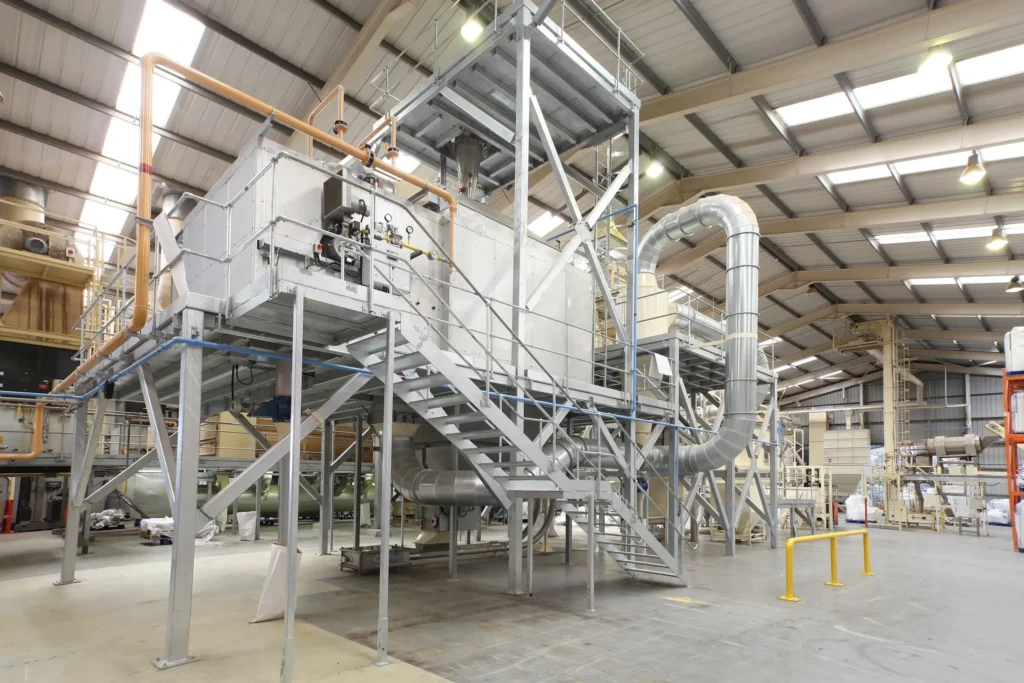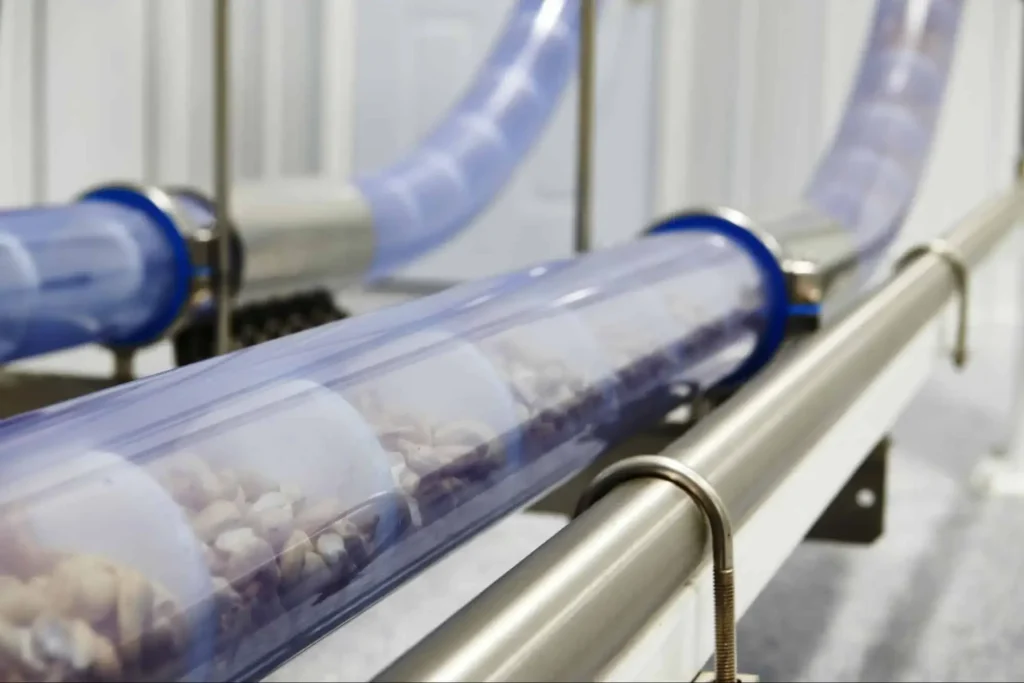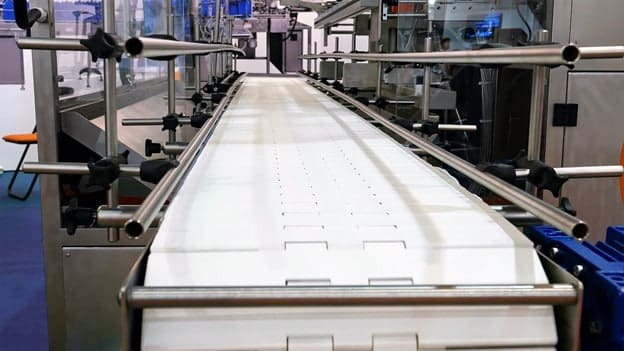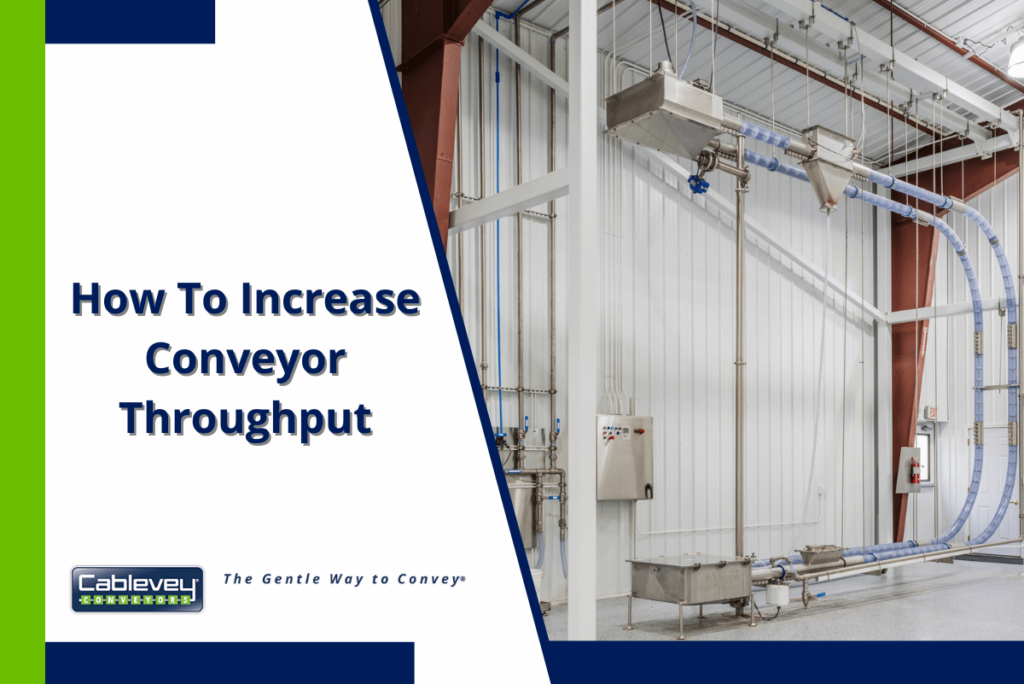In the relentless pursuit of business growth and efficiency, optimizing industrial conveyor systems stands as a crucial factor. Discover the key strategies on how to increase conveyor throughput and propel your industrial operations to new heights. Explore the expertise of Cablevey Conveyors in automated conveyor systems and elevate your conveying performance.
How to Increase Conveyor Throughput?
To increase conveyor technologies throughput, focus on strategies such as bottleneck elimination, buffering, and speed control. In the case of any business, it is natural to be focused on growth and efficiency. You are looking to increase productivity while reducing operational costs in every aspect, and your automatic conveyor system is no different.
Throughput is often one of the first areas to be addressed when trying to achieve productivity and efficiency goals. In our State Of Conveying report, 26% of respondents from industrial facilities listed high volume per hour as one of the top three considerations for selecting a new automated conveyor system.
Advantages of Optimal Conveyor Throughput for Your Business
Exploring all the advantages of your conveying system is a must if you want to get the best results. After all, if your product is not moving, it cannot be processed or shipped. Optimal conveying throughput comes with a host of benefits that directly impact your business, including:
- Increased production,
- Reduced downtime,
- Lower labor costs,
- Smoother product flow.

What Is Conveyor Throughput?
Conveying throughput is a measure of how much product conveyor solutions can move in a given period of time. The goal is to have the maximum amount of product moving through the system while maintaining high quality and safety standards. There are a few factors that contribute to conveying throughput, including:
- Conveying velocity – This is the rate at which your products are moving on the conveying system.
- Properties of the product – The size, weight, and shape of your product or material can affect how quickly it can move through the system, as well as how fragile it is.
- Conveyor design – The type of conveying system will also impact capacity. Some conveyors are better suited for high-volume throughput than others. For example, bucket elevators can move up to 130,000 lb/h (6,000 tons/h) compared to the maximum capacity of vacuum conveyors at around 33,000 lb/h (15 tons/h).
- Operational procedures – How conveyors are being used can also affect throughput. If your system is not being operated correctly, it will not reach its potential.
This list is only a short overview of what can affect conveying throughput. Throughput can be calculated using different methods for each conveyor and product type.
How Is Conveying Capacity Calculated?
Here is an example of conveying capacity calculated for a belt conveyor system:
Q = ρ * A * v
In this formula, Q represents the capacity (in kg/s or lb/s), ρ is the average density of the conveyed material in kg/m3 or lb/ft3, A is the cross-sectional area of the item or the bulk solid on the belt (in m2 or ft2), and v is the belt speed in m/s or ft/s.
This is only one example of how throughput can be calculated. As mentioned, the formula will change depending on the type of conveying system and the product being conveyed. Some might be more complicated to calculate than others, depending on the factors involved.
The most important thing is to have a clear understanding of your goals and objectives so you can determine the best way to measure throughput for your specific needs. If you need help, consulting with an expert is always an option. They will be able to help you understand the different ways you can calculate the capacity and find the method that works best for your business.

Step-By-Step Guide on How to Increase Conveying Throughput
So, after careful analysis, you have determined that your conveying system could be moving more product, and you want to know how to increase throughput. Below are a few ways you can achieve this:
Eliminate Bottlenecks
A bottleneck is anything that slows down or halts the flow of a product. This can be caused by several things, including:
- Poorly designed transfer points,
- Belt tracking issues (on a conveyor belt system),
- Worn or damaged conveying rollers,
- Inadequate conveyor cleaning,
- Buildup on the pulleys, chains, and cables.
These issues can cause your system to operate at reduced throughput. To eliminate bottlenecks, you need to identify where they are occurring and find a solution. This might involve making changes to the system itself or the way it is being operated.
Introduce Buffering
In an industrial process, buffering is used to even out the flow of the product. This is done by storing the product in a buffer (a temporary storage area) until it is needed by the next machine in the production line.For example, if you have a machine that can only operate at a certain speed, you can use a buffer to store the product until the machine is ready for it. This way, the product doesn’t have to wait for the machine and can keep moving through the process. Buffering is often used in conjunction with other methods to increase throughput, such as accumulating.
Introduce Accumulating
Accumulation is also used to even out the flow of the product. However, instead of storing the product before it is needed, accumulating allows it to build up after it has been processed, especially if a downstream machine is not ready for it.
Accumulation can be used with belt, roller, chain, cable, and disc conveyors. With both buffering and accumulating, it is essential to calculate the amount of product that can be stored without causing issues further down the line. Too much product in the buffer or too much accumulation can lead to problems such as:
- Belt tracking issues,
- Buildup on the pulleys, chains, or cables,
- Damage to the product.
Therefore, it is important to find the right balance so you can increase throughput without causing any issues.
Speed Control
Depending on the conveying system type, you might be able to increase throughput by controlling the speed. This can be done either manually or automatically, depending on the system. With conveyor belt systems, for example, you can increase the speed by adjusting the drive pulley ratio and installing a variable frequency drive (VFD) on any mechanical conveying equipment.
By controlling the speed of the conveying system, you can ensure that the product is stored in the buffer or allowed to accumulate until it is needed. Speed control can also be used to improve safety by reducing the chance of a product being damaged or falling off. Of course, in the case of a tubular conveyor, such as the tubular drag one, there is no concern about the product falling off the system.
Educate Your Operators
Your operators play a big role in how efficiently your system runs. If they are not properly trained on how to use the system, you may not be able to achieve the throughput you need. It is important to educate your operators on:
- How the system works,
- The importance of safety,
- How to troubleshoot common problems,
- The correct way to load and unload products.
By properly training your operators, you can help ensure your system runs as efficiently as possible.
Follow the Cautionary Consideration – Faster Is Not Always Better
Notice how we didn’t mention one very obvious solution to increasing conveying throughput – running belt or tubular conveying system faster. In some cases, this might be possible and will have the desired effect. However, in most cases, it could do more harm than good. For example, if you are already experiencing issues with product buildup or belt tracking, increasing the speed of the manufacturing conveyor systems is likely to make these problems worse.
It is also important to consider the effect that increasing the speed will have on your product. If the product is delicate or fragile, running the conveyor faster could damage it. This is one of the reasons why pneumatic conveyors are unsuitable for fragile materials such as nuts, snack food, breakfast cereal, and similar – the high speed of the conveyor engineering severely damages the material, drastically affecting the quality of the final product.

Choose One of the Best Conveyor Systems Manufacturers and Increase Your Production
Being concerned about throughput is a common aspect of running any industrial operation. Several ways to increase the throughput we mentioned above will boost your conveyor manufacturing experience and efficiency. However, it is important to consider the potential consequences of increasing throughput before making any changes to your system. If you need help calculating or increasing the throughput on your system, our team of experts can offer advice and assistance. Contact Cablevey today to learn more.






